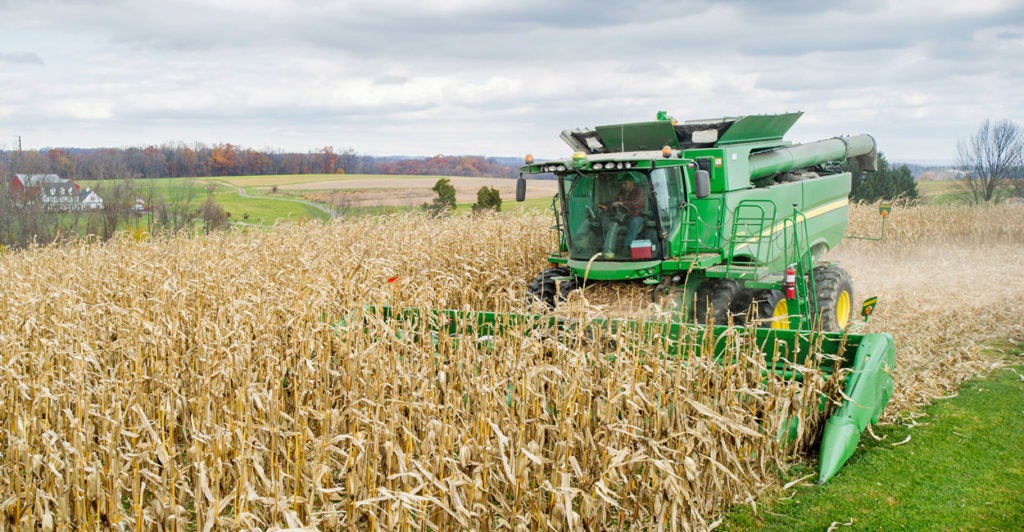Major food stamp reform is a must in the farm bill. So too is major reform for farm subsidies–after all, it is called the farm bill.
Much of the focus, though, has been on food stamp reform, including from conservatives.
How would it look though if conservatives reform the food stamp safety net and as a result improve the well-being of the poor by reducing dependence on government, yet at the same time they expand the farm safety net and increase dependence on government?
This appears to be a real possibility. And, obviously, it would look really bad. One can easily imagine the liberal talking points now, asserting that conservatives hate the poor and love the rich.
These talking points regarding the poor would be way off. But, at least in the farm bill context, it would be tough to argue the claim about the rich given that most subsidies go to farm households that have much greater income and wealth than non-farm households (there is a reverse Robin Hood effect).
For example, imagine trying to defend not reforming subsidies to large family farms. According to United States Department of Agriculture data, large family farms, which received 32 percent of commodity payments and 34 percent of crop insurance indemnities in 2016, had a median household income of $347,000 (about six times the median income for all U.S. households) and median household net worth of $3.8 million (about 39 times the median wealth for all U.S. households).
That’s not all.
The reverse Robin Hood effect is only getting worse over time, as a recent USDA report points out. For example, the report explains: “In 1991, half of commodity program payments went to farms operated by households with incomes over $60,717 (in constant 2015 dollars); however, in 2015, half went to households with incomes over $146,126.” The report added, “However, in 2015, half went to households with incomes over $146,126.”
The biggest problem though isn’t how it looks. Instead, it would be conservatives failing to promote sound policy. Even worse, it would be conservatives turning their back on three basic principles.
1. Fiscal Conservatism. In the last farm bill, Congress got rid of the direct payment program, which provided subsidies to farmers regardless of need. Instead of stopping there, Congress unwisely created two new commodity programs called the Agriculture Risk Coverage (ARC) and Price Loss Coverage (PLC) programs.
These two programs are costing more than the direct payments program. This would be funny if it weren’t so sad. Plus, these programs are costing about 80 percent more than projected, with a cost overrun of about $13 billion.
What does the House agriculture committee farm bill do? It would make changes so that Agriculture Risk Coverage and Price Loss Coverage payments would be made more likely, not less likely.
Conservatives should be trying to get rid of these two payments altogether. At a minimum they should be finding ways to rein in all the spending.
2. Reducing Waste. Conservatives are supposed to fight waste, not expand it. Yet, under the House agriculture committee farm bill, American taxpayers could be on the hook for payments to Brazilian cotton growers. Now that’s serious waste. Taxpayers have already paid about $800 million to Brazil in recent years to settle a long-standing trade dispute over U.S. trade-distorting cotton subsidies.
In the last farm bill, Congress intentionally avoided further problems by not including cotton in certain commodity programs. The Committee farm bill would irresponsibly risk another trade dispute by adding cotton to those programs, which very well could lead to taxpayers again paying millions of dollars to Brazil in order to settle a new dispute. As it is, cotton is already one of the most heavily subsidized commodities without being added to these programs.
The biggest waste, however, is providing multiple payments to agricultural producers, which are generally the largest producers, for the same losses. It’s bad enough that some producers receive subsidies to help them compete in the marketplace, unlike most farmers, but it is inexcusable that they receive multiple price/revenue related payments such as through the Agriculture Risk Coverage and Price Loss Coverage programs and crop insurance. Producers should at least be expected to choose: Agriculture Risk Coverage and Price Loss Coverage programs or crop insurance.
3. Respect for Freedom and Markets. It isn’t conservative to limit how much of a commodity can be sold. Nor is it conservative to try and restrict supply to intentionally drive up prices. This is exactly what the federal sugar program does.
The very idea that agricultural producers need taxpayer help to compete in the marketplace is certainly not conservative. Farm subsidy proponents will claim that agriculture is unique and therefore needs assistance to compete like other businesses. Yet, they fail to explain why almost the entire agricultural sector doesn’t receive market-related subsidies yet succeeds.
The Congressional Research Service recently released a report showing that 94 percent of farm program support goes to just six commodities (corn, cotton, peanuts, rice, soybeans, and wheat). In other words, almost all commodities receive little to no assistance. This subsidy system is flat-out cronyism, not a safety net. Conservatives should be fighting cronyism and draining the swamp, not allowing it to fester and even grow.
Former American Farm Bureau Federation president Bob Stallman captured the subsidy issue well. As the Washington Post reports: “Stallman dismisses outright the claim that farmers couldn’t survive without subsidy money. ‘Why does the livestock industry survive without subsidies?’ he asks. ‘Why does the specialty crop [fruit and vegetable] industry survive?’”
A Major Opportunity
The good news is conservatives have a chance to fix the broken House Agriculture Committee farm bill. The bill is expected to be considered on the floor next week. Through a vibrant and open amendment process, conservatives should make major reforms to the out of control farm handout system.
A House farm bill will likely be viewed as a conservative farm bill, given opposition from liberals. If so, it should at least be conservative.
